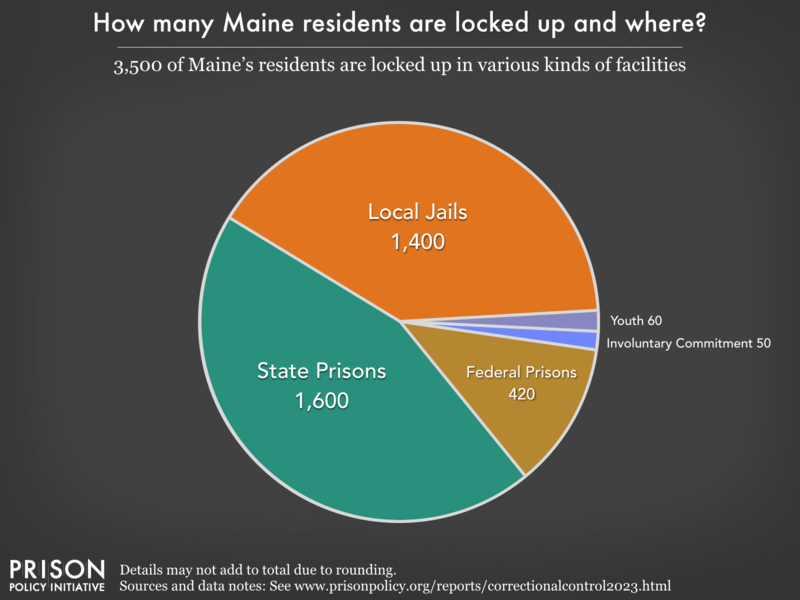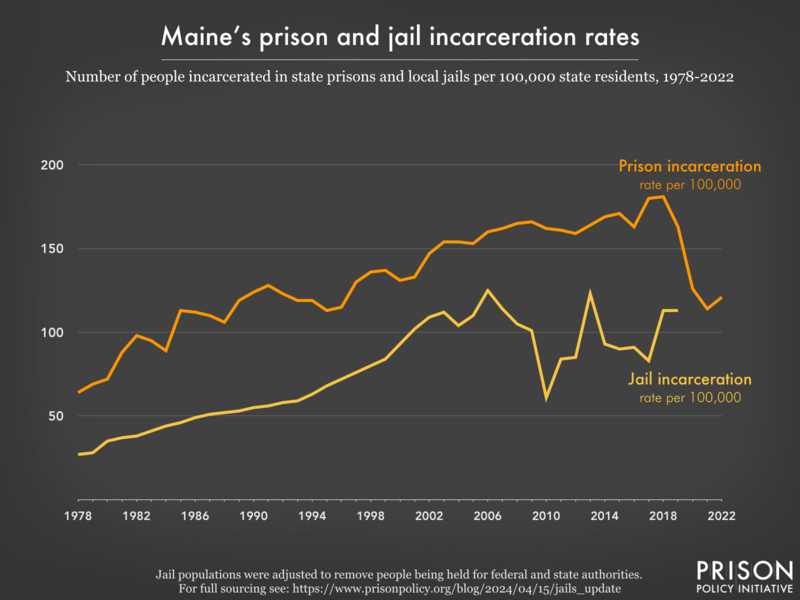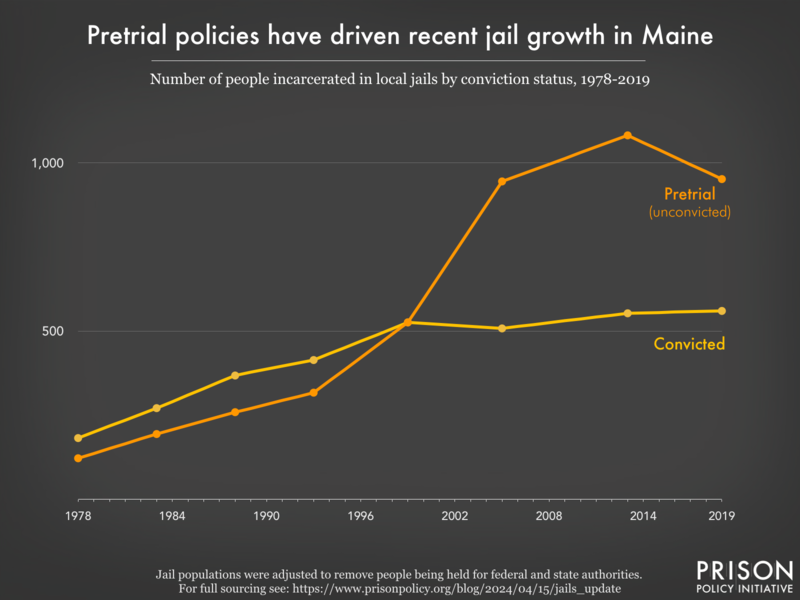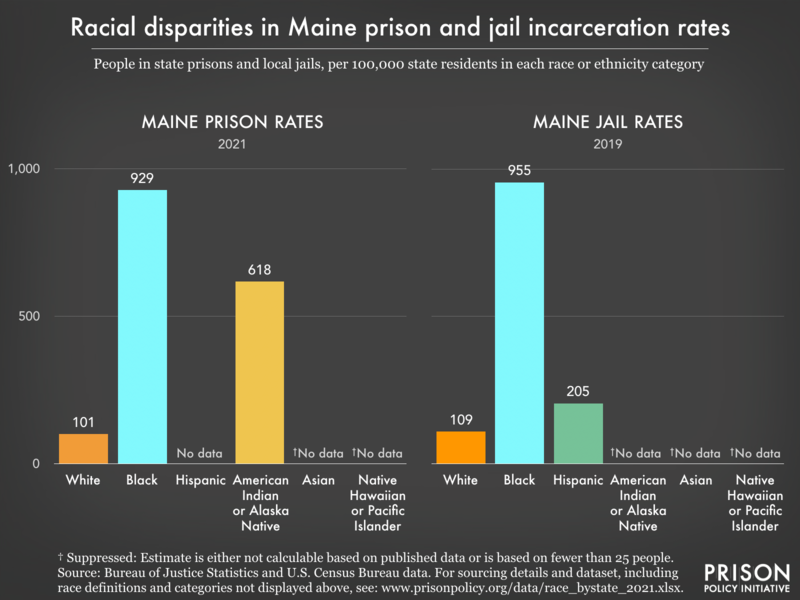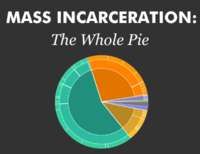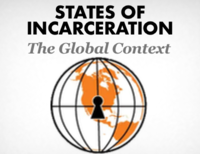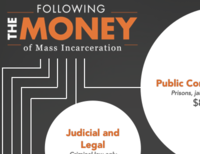Thank you,
—Peter Wagner, Executive Director
Donate
Maine profile
Maine has an incarceration rate of 272 per 100,000 people (including prisons, jails, immigration detention, and juvenile justice facilities), meaning that it locks up a higher percentage of its people than almost any democratic country on earth. Read on to learn more about who is incarcerated in Maine and why.
3,500 people from Maine are behind bars
Additionally, the number of people impacted by county and city jails in Maine is much larger than the graph above would suggest, because people cycle through local jails relatively quickly. Each year, at least 14,000 different people are booked into local jails in Maine.
Rates of imprisonment have grown dramatically in the last 40 years
- total numbers rather than rates.
- Women’s prisons: Incarceration Rates | Total Population
- Men’s prisons: Incarceration Rates | Total Population
Today, Maine’s incarceration rates stand out internationally

People of color are overrepresented in prisons and jails
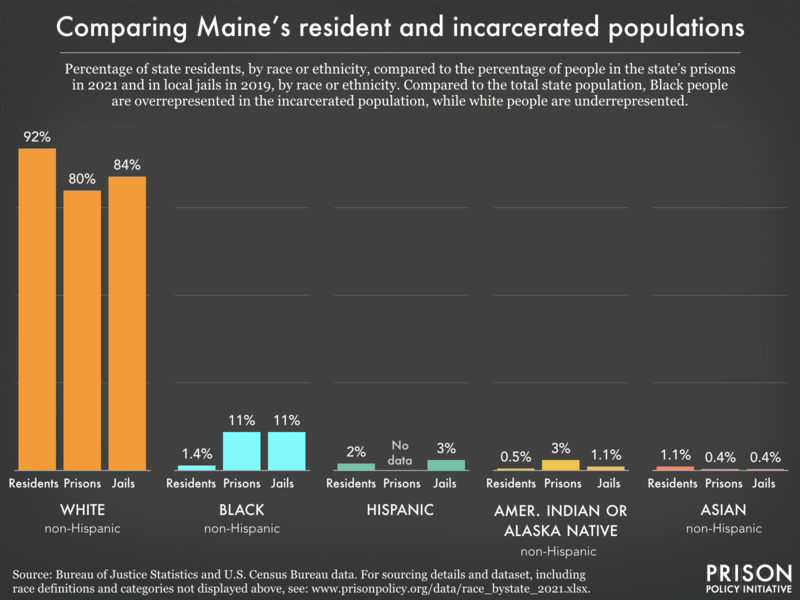
Maine's criminal justice system is more than just its prisons and jails
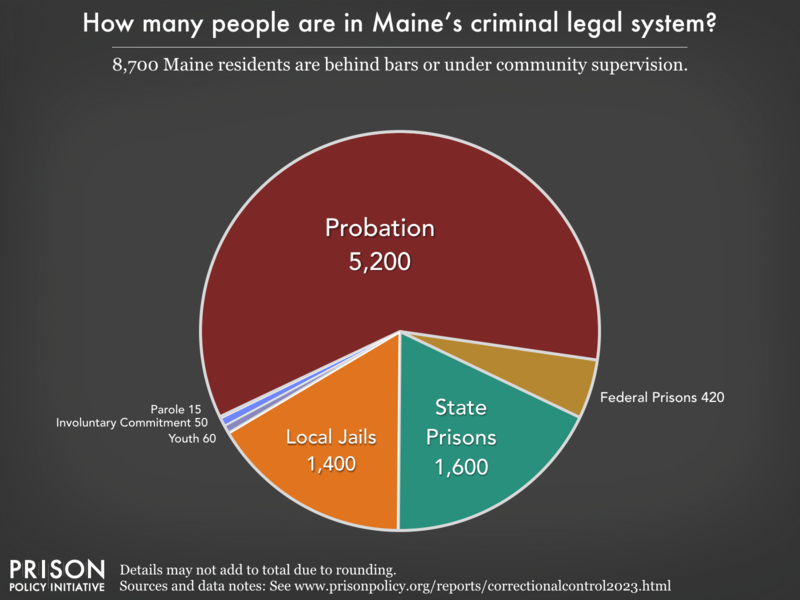
Reports and briefings about Maine's criminal legal system:
Filter to show
- People on probation in Maine are saddled with onerous rules and conditions they must follow every day or risk incarceration.
- Prisons in Maine have tablets, but they may be being used to restrict incarcerated people’s access to books and sap them of the little money they have.
- With an incarceration rate of 272 per 100,000 residents, Maine locks up a higher percentage of its people than almost any democratic country on earth.
- Prisons in Maine force incarcerated people and their families — some of the most vulnerable members of society — to subsidize mass incarceration.
- 63% of people in Maine jails have not been convicted of a crime, meaning they're legally innocent. There are simple steps the state can take to reduce this number. Why isn't it?
- Maine releases roughly 24,163 men and 7,624 women from its prisons and jails each year. What is it doing to support them upon reentry?
- In Maine prisons, assaulting a non-incarcerated person comes with a $100 fine that puts incarcerated people in debt to the state
- Black people in Maine are incarcerated at a rate 9.2 times higher than white people.
- Maine's choice to criminalize "failure to appear" may be hurting public safety
- The cost of incarcerating older people is incredibly high, and their risk of reincarceration is incredibly low, yet 13% of people in Maine prisons are over the age of 55. Why is the state keeping so many older people locked up?
- Prisons in Northeastern states, like Maine, have seen the greatest increase in deaths during heatwaves.
- Governor Janet Mills signed a measure in June 2023 ending prison gerrymandering in legislative redistricting.
- Maine makes it difficult or even risky for incarcerated journalists to tell their stories.
- In Maine, 3,500 people are incarcerated and another 5,215 are on probation or parole.
- Maine does not offer e-messaging in prisons.
- Jails in Maine charge up to $3.15 for a 15-minute phone call, reaping profits for companies, while prisons charge $1.35 for a 15-minute call.
- Only 24 people in Maine prisons received commutations between 2005 and 2021, and none during the COVID-19 pandemic
- Maine suspended its $5 medical copay in prisons at the beginning of the pandemic for flu related medical visits — but should eliminate them entirely.
- People in Maine prisons must have a zero balance in their account to receive basic hygiene items, writing supplies, and free legal photocopies.
- Maine prisons charge families up to a 12% fee to transfer money to an incarcerated loved one.
- We gave Maine a failing grade in September 2021 for its response to the coronavirus in prisons.
- How many COVID-19 cases in Maine communities can be linked to outbreaks in correctional facilities? (data from our report Mass Incarceration, COVID-19, and Community Spread)
- We graded the parole release systems of all 50 states - Maine gets an F-
- New data: Low incomes — but high fees — for people on probation in Maine
- The hidden costs in Maine’s “no-cost” prison tablet contract
- Maine incarcerates women at a rate of 81 per 100,000 residents — higher than almost any democratic country on earth.
- People in Maine prisons earn as little as 58¢ an hour for their work.
- Prison-based gerrymandering costs Maine 8th graders local schooling
- Phantom Constituents in Maine’s Regional School Unit 13: How the Census Bureau’s outdated method of counting prisoners harms democracy
Other resources
- Research on Maine in our Research Library
